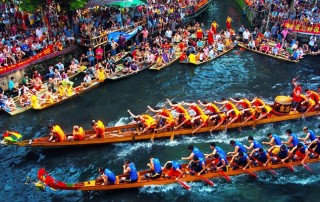As an old Chinese proverb states: “All creations are reborn on new year’s day. It’s a celebration of change.” (万象更新- Wànxiàng gēngxīn)
Preparations
Days before the Chinese New Year people are very busy preparing for the festivities. Every family cleans their house from bottom to top. They believe that by sweeping away the bad luck of the preceding year, new luck will pass by. On the first day of Chinese New Year, brooms and dust pans are put away to make sure the newly arrived good luck cannot be swept away. Families also spare no effort in decorating their homes with red-colored paper-cuts and couplets with ‘good fortune’ or ‘happiness’, ‘wealth’ or ‘longevity’.
New Year's Eve
On the eve of Chinese New Year, people enjoy supper with their family. The food that is prepared varies widely from region to region. People in the North of China for instance make jiǎozi (餃子 - dumplings), as the shape of the dumplings resembles a Chinese tael (currency), which symbolizes ‘wealth’. It is customary in the South to make niángāo (年糕 - new year cake) and send pieces of it as a gift to relatives and friends, since niángāo also means ‘increasingly prosperous year in year out’.
On the first day, family members give red envelopes containing cash to younger relatives. Also most employees receive bonuses through red envelopes from their bosses for good luck and wealth.
Dragons
 Last but not least, we must say something about dragon dances! Those dances are very common during Chinese New Year. It is believed that the loud beats of the drum together with the face of the dragon would evict bad or evil spirits. Sometimes families even invite private dragon dancers to make sure their relatives are protected from all misfortune.
Last but not least, we must say something about dragon dances! Those dances are very common during Chinese New Year. It is believed that the loud beats of the drum together with the face of the dragon would evict bad or evil spirits. Sometimes families even invite private dragon dancers to make sure their relatives are protected from all misfortune.